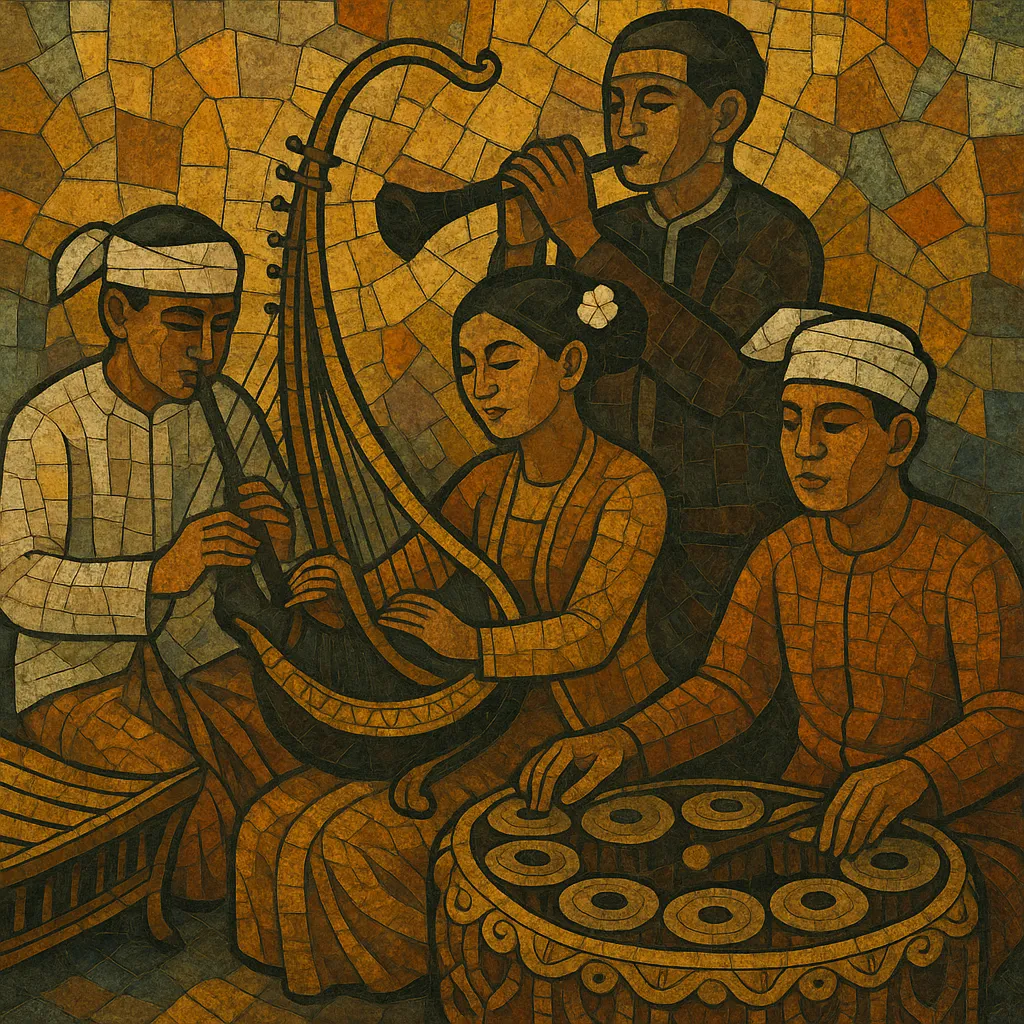Bamar music refers to the traditional musical practices of the Bamar (Burman) majority of Myanmar, encompassing courtly classical repertoires (Mahāgīta), vigorous hsaing waing percussion ensembles, refined solo traditions for the saung gauk (arched harp) and pattala (bamboo xylophone), and music for dance-drama, marionette theatre (yoke thé), and popular festivals (pwe).
It is characterized by cyclic, colotomic time structures articulated by small time-keeping instruments (si and wa), an ornate, heterophonic texture in which multiple instruments elaborate a shared melody, and modal-melodic systems that draw on heptatonic/pentatonic pitch collections particular to Myanmar. The timbral core is the hne (double-reed oboe), pat waing (drum circle), bronze gongs (kyi waing, maung hsaing), and idiophones, with courtly refinement supplied by the harp and xylophone.
Across history, Bamar music absorbed influences from neighboring Mon, Thai, and Khmer courts and from Buddhist liturgical and Indic traditions, yet retained distinct aesthetics—highly ornamented melody, elastic vocal delivery, and a powerful percussive drive—closely tied to ritual, theatre, and social life.
Bamar musical identity formed out of earlier Pyu and Mon courtly cultures. By the Pagan (Bagan) Kingdom in the 11th–13th centuries, core instruments such as the saung gauk (arched harp) and time-keeping pairs (si and wa) were in court use, and Buddhist ritual soundscapes shaped ceremonial practice.
Under the Taungoo and Konbaung dynasties, Bamar court music crystallized into refined genres, with the Mahāgīta corpus (classical songs) compiled and elaborated. The hsaing waing ensemble (centered on pat waing drum-circle, hne oboe, and bronze gongs) became the emblematic sound for processions, court events, and theatre, while the saung and pattala cultivated intimate, virtuosic repertoires.
Music animated yoke thé (marionette theatre), zat pwe (dance-drama), and anyeint (satirical song-and-dance), with singers and instrumentalists coordinating through colotomic cycles and cueing conventions. These forms brought elite styles to wider audiences and linked musical performance to narrative, dance, and ritual.
Urbanization, radio, and recording fostered new song forms and orchestral arrangements. Bandleaders and composers adapted classical modes and rhythmic cycles into modern concert and film music; hsaing waing ensembles appeared on stage and radio, and piano-based “Sandaya” stylings engaged with Bamar melodic logic.
Today, conservatories, university ensembles, and master musicians preserve classical practice while collaborating across genres. Traditional instruments and Mahāgīta songcraft continue to inform popular, sacred, and theatrical contexts, maintaining Bamar music’s role in festivals, ritual, and national cultural identity.


